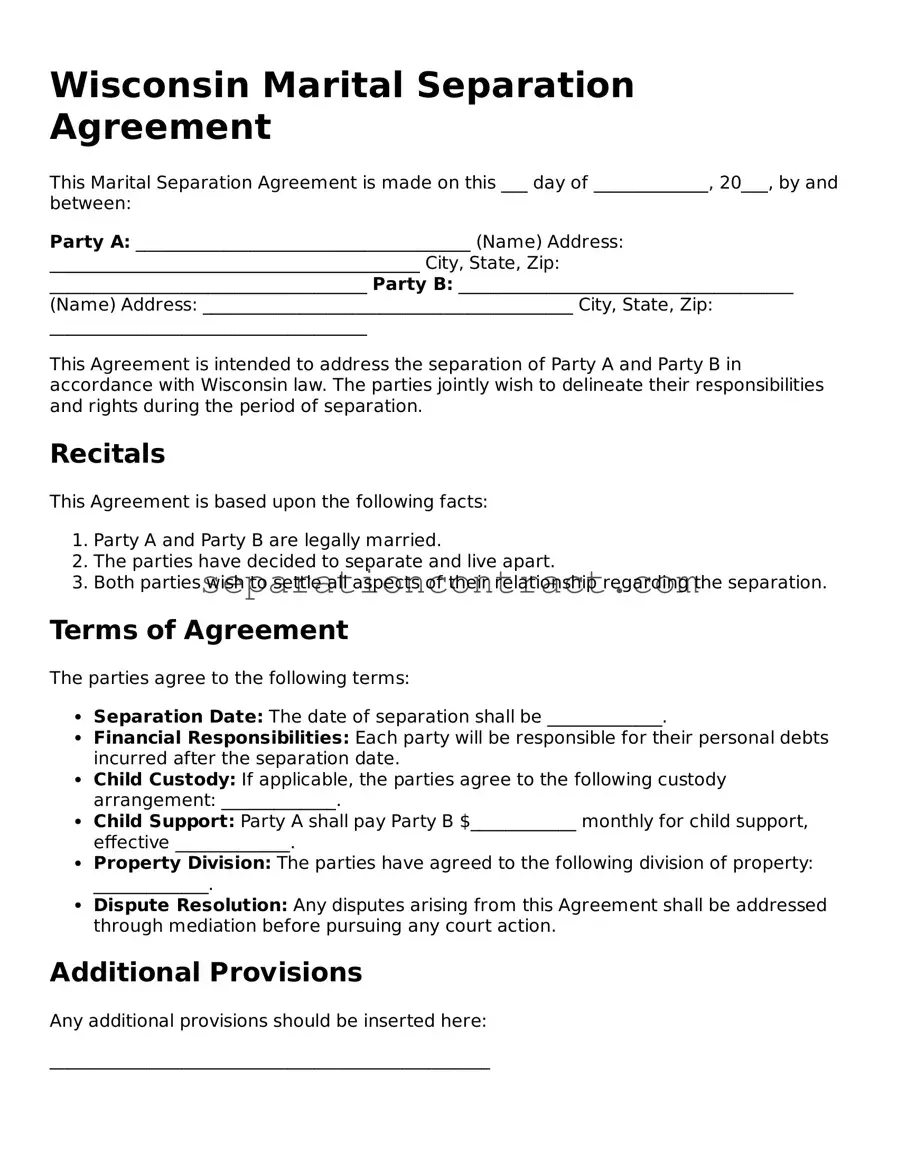When filling out the Wisconsin Marital Separation Agreement form, individuals often overlook important details. One common mistake is failing to provide complete information about assets and debts. It’s essential to list all marital property and liabilities accurately. Omitting any significant items can lead to disputes later on, which may complicate the separation process.
Another frequent error is not addressing child custody and support arrangements adequately. Parents may assume that verbal agreements will suffice. However, these should be documented clearly in the agreement to avoid misunderstandings and ensure that both parties are on the same page regarding their responsibilities.
Some individuals neglect to consider tax implications of their separation. Failing to consult a tax professional can result in unforeseen financial consequences. It’s crucial to understand how separation may affect tax filings, especially concerning child support and alimony payments.
Many people also make the mistake of not reviewing the agreement thoroughly before signing. Rushing through the process can lead to errors or misinterpretations of the terms. Taking the time to read the entire document can help ensure that all provisions are understood and agreed upon.
Additionally, individuals might not seek legal advice when completing the form. While it is possible to fill out the agreement independently, consulting with a legal professional can provide valuable insights. They can help clarify any confusing aspects and ensure that the agreement meets all legal requirements.
Finally, some people forget to update the agreement if circumstances change. Life events such as job changes, relocations, or changes in the children’s needs may require modifications to the agreement. Keeping the document current is vital to ensure it remains relevant and enforceable.
